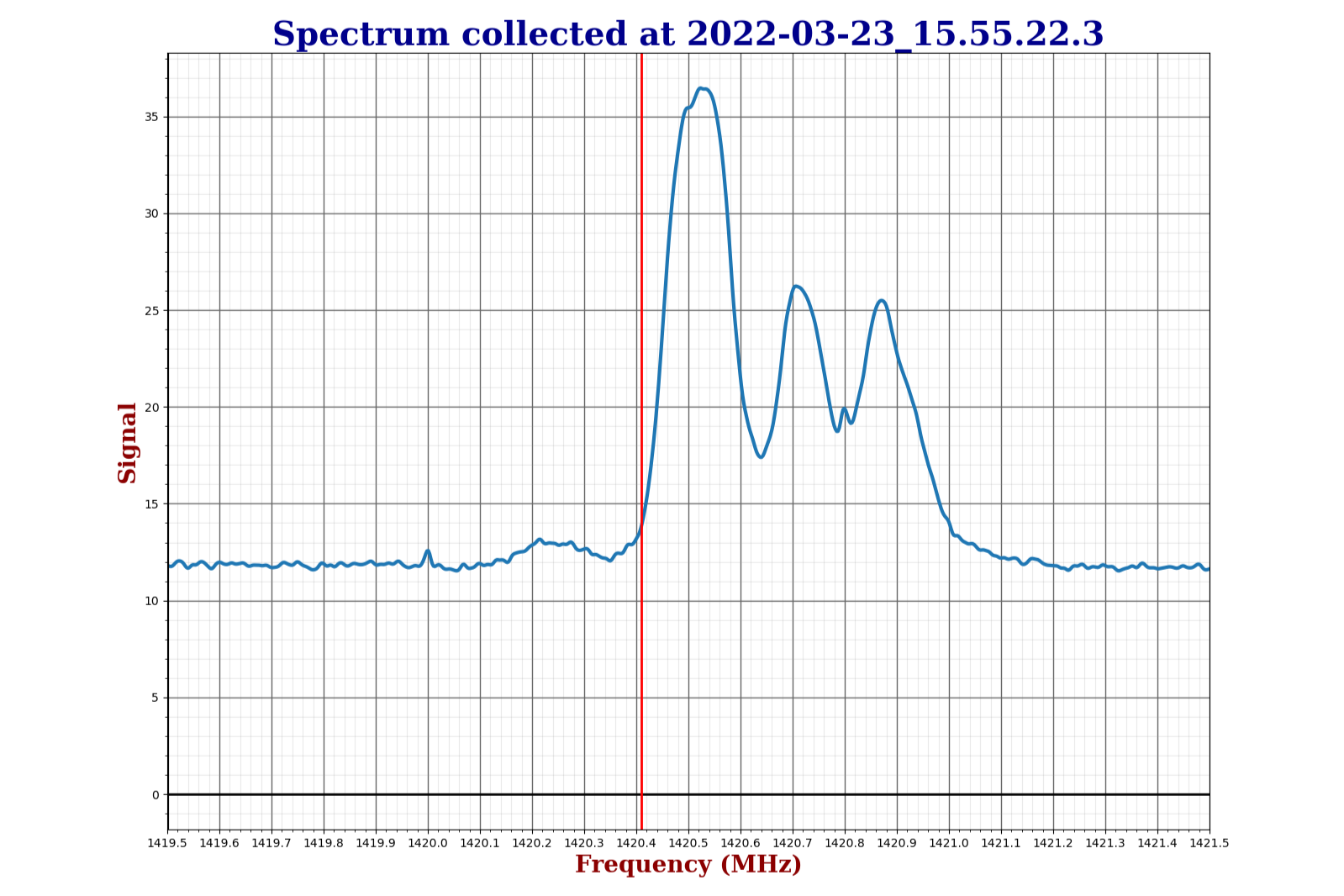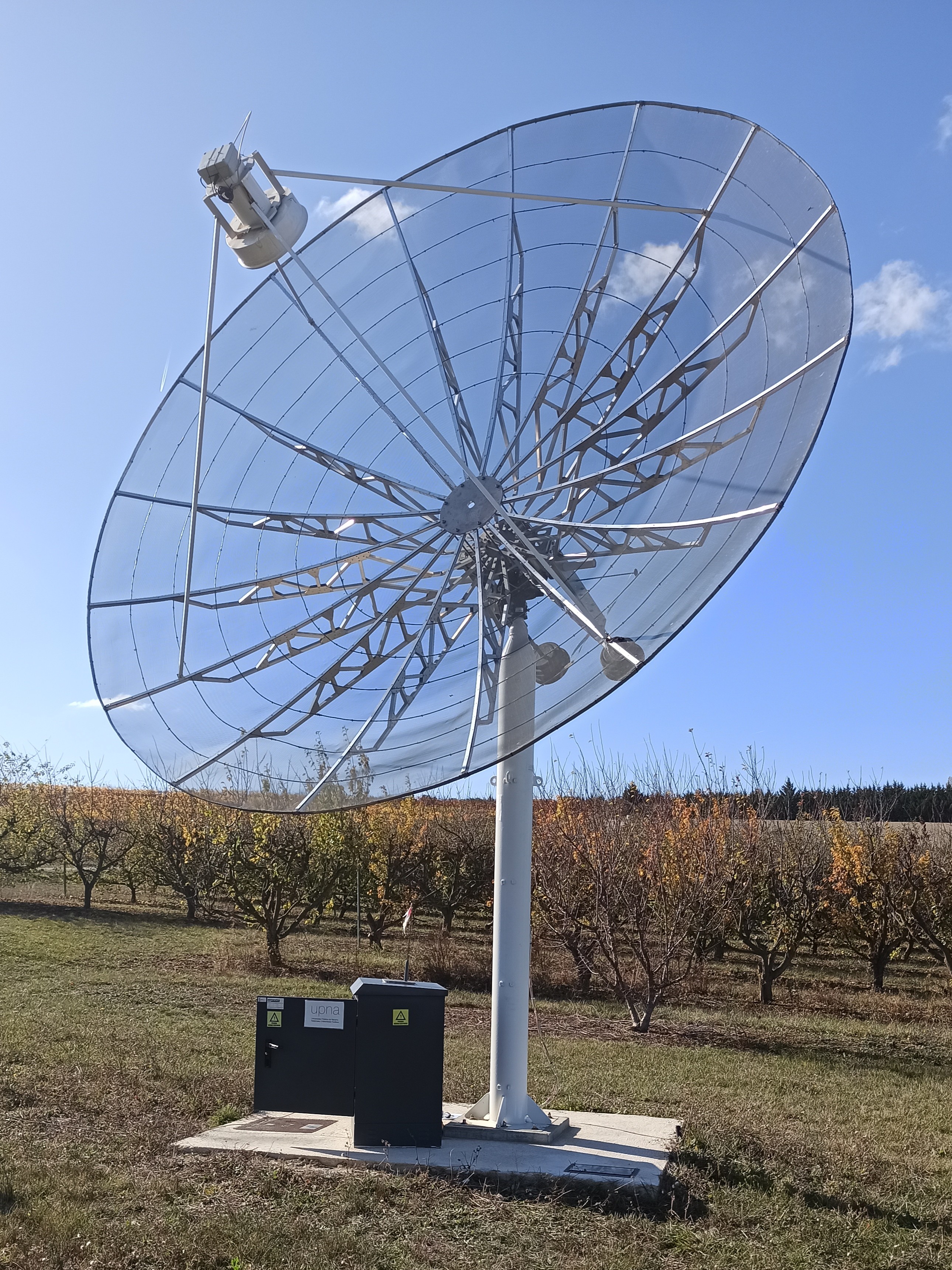Design and Calibration of the Signal Reception System of a Radio Telescope
UPNA Internship
This project is the result of a 6-month work Internship in the Public University of Navarre in 2022. Here you can find a summary of the work carried out as well as the link to the complete text.
Abstract
This project focuses on enhancing the capabilities of the Jocellyn Bell Burnell Radio Telescope at the Public University of Navarre. Key improvements include the development of a calibration and observation system and partial automation of the telescope’s movement system. The calibration system enables accurate detection of the 21-cm hydrogen line, crucial for observing neutral hydrogen in galactic structures, using software-defined radio (SDR) receivers, specifically RSPduo and BladeRF devices. Custom modifications to GNU Radio software allow for the saving and re-utilization of calibration settings, streamlining future observations. The automation of the telescope’s movement system was achieved via a client-server setup, allowing it to follow preset paths without manual intervention. This project not only enhances the telescope’s operational precision but also promotes radio astronomy among university students, offering a practical platform for academic research and skill development in telecommunications and astrophysics.
The complete document can be found here.

